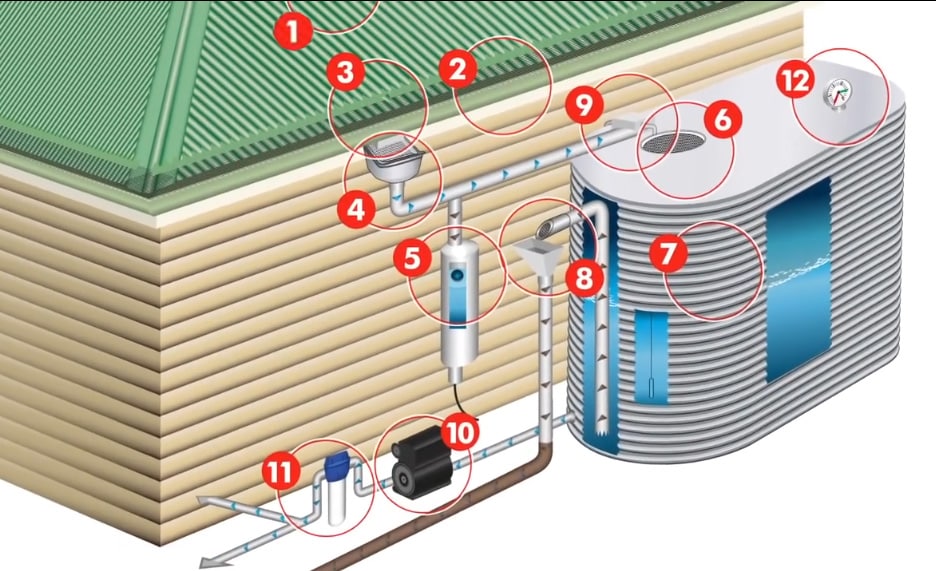Please add some products from our shop, so we can generate a quote for you.
12 Rain Harvesting Steps – What are The Advantages?
- Improve Water Quality
- Increase Catchment Efficiency
- Protect Pumps and Household Appliances
- Reduce Tank Maintenance

Source: 12 Steps to Rainwater Harvesting, Blue Mountain Co
1. Check your ROOF SURFACE is clear from trees, vegetation and surface materials.
2. Install GUTTER MESH to prevent debris from blocking gutters.
3. Fit BELOW-THE-GUTTER OUTLETS to prevent obstruction and improve water flow.
4. Install a LEAF EATER rain head to keep debris out of down pipes.
5. Install a FIRST FLUSH DIVERTER to divert the most contaminated roof water away from the tank.
6. Ensure a LEAF STRAINER WITH LIGHT GUARD is installed on the tank outlet to keep pests out and restrict light.
7. Select a suitable WATER TANK SIZE for your needs. Consider annual rainfall, roof size and water usage.
8. Attach INSET PROOF SCREENS to the end of all pipes to keep mosquitoes and pests out.
9. Install a MAINS WATER SWITCHING DEVICE to automatically top up tank with water when low.
10. If water pressure is required install a PRESSURE PUMP to distribute water around the house or garden.
11. Fit a RAINWATER FILTER after the pump to reduce sediment.
12. Install a TANK GAUGE level indicator to your tank to monitor your water level.

